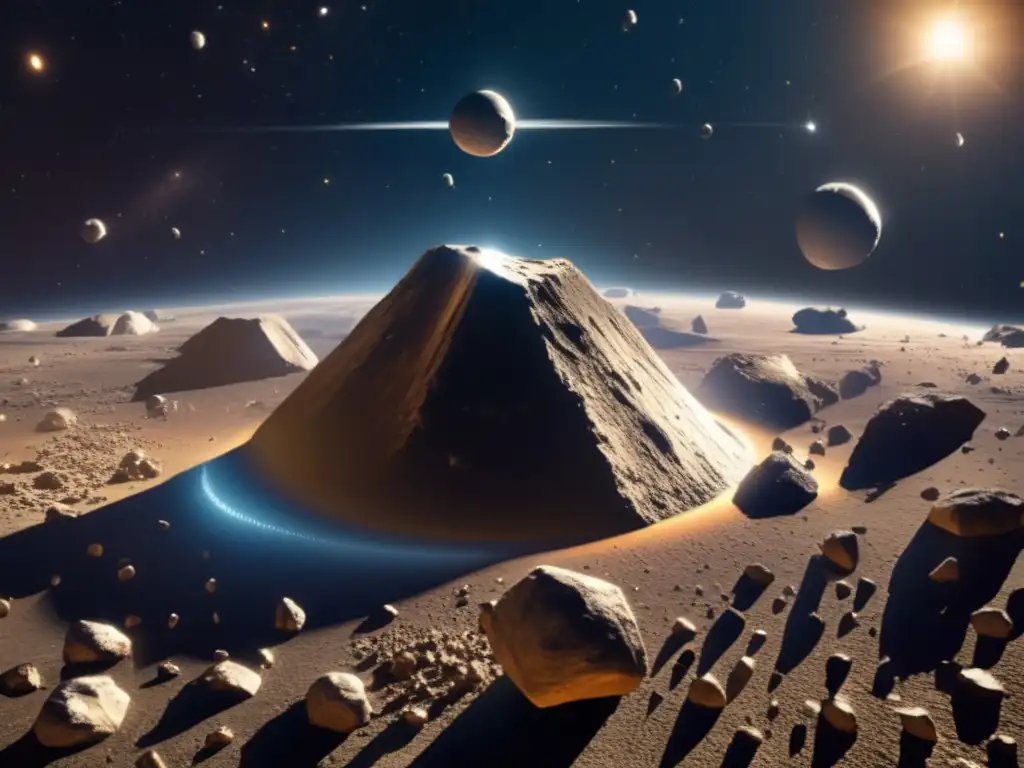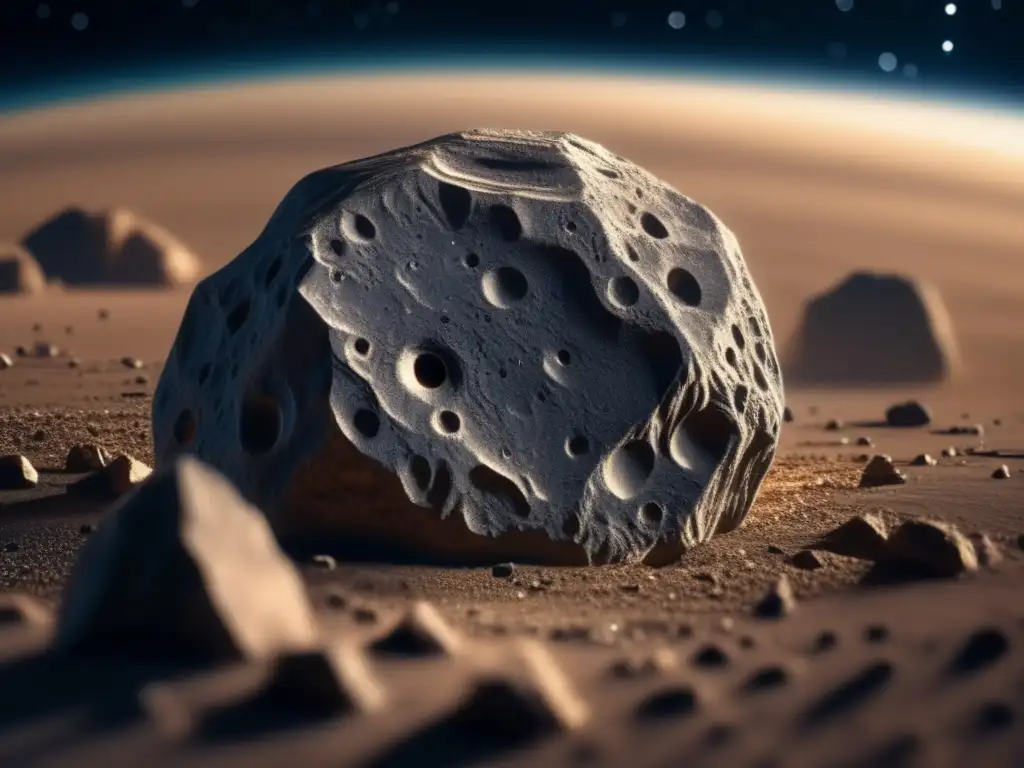A Deep Look Into Astraea: The Fifth Asteroid To Be Discovered

Introduction
Astraea is the fifth asteroid ever discovered and one of the largest in the asteroid belt. It was first observed on December 8, 1845 by astronomer Karl Ludwig Hencke. Its discovery was important in the field of astronomy as it marked a significant milestone in the search for celestial objects between Mars and Jupiter. As we delve deep into Astraea's history, mythology, and cultural significance, we'll learn more about this fascinating asteroid.
Astraea's History and Discovery

Discovery
Astraea was discovered by German astronomer Karl Ludwig Hencke, who spent years searching for a new planet. He discovered Astraea while working at the Seeberg Observatory in Germany. Upon its discovery, Hencke initially mistook it for a star, but after observing it over several nights, he realized that it was a new celestial object.
Naming
The asteroid was named after Astraea, the Greek goddess of justice. She is depicted carrying a set of scales representing balance and harmony. The naming of Astraea reflected the belief that the discovery of this celestial object was a testament to the purity of scientific inquiry and the search for truth and justice.
Physical Characteristics
Astraea is categorized as a C-type asteroid, which means that it has a carbonaceous surface and is dark in color. It has an irregularly shaped body and measures approximately 119 miles (192 kilometers) in diameter. Astraea rotates around its axis every 16 hours and 6 minutes.
Astraea's Mythology and Cultural Significance

Mythology
In Greek mythology, Astraea was one of the last beings to live among humans during the Golden Age. She was revered for her ability to bring justice and peace to society, but as humanity became more corrupt, she became disillusioned with them and left for the heavens. The myth of Astraea represents the belief that justice and righteousness are powerful forces that can bring about a better world.
Cultural Significance
Astraea has had significant cultural impact, particularly in literature and the arts. In John Milton's epic poem "Paradise Lost," Astraea is used as a symbol of justice and truth. She is also referenced in William Shakespeare's play "Henry VI" and Alexander Pope's poem "An Essay on Man." In art, Astraea has been depicted in numerous paintings, sculptures, and other works of art throughout history.
The Science of Astraea

Orbit and Composition
Astraea orbits the sun at an average distance of 186 million miles (299 million kilometers), with an orbital period of 4.13 years. Its composition contains water, iron, and various other minerals, which scientists believe could provide valuable scientific insights into the formation and evolution of our solar system.
Missions to Astraea
To date, no spacecraft has been sent to study Astraea specifically. However, there have been numerous missions sent to explore the asteroid belt, some of which have flown by Astraea. The Dawn spacecraft, launched by NASA in 2007, flew by Astraea in 2011 on its way to the asteroid Vesta.
Future Exploration
As technology advances, it is likely that we will see more missions sent to study asteroids in the coming decades. In fact, NASA plans to launch its Psyche spacecraft in 2022, which will explore the asteroid Psyche and provide valuable scientific insights into the composition and formation of asteroids.
Frequently Asked Questions

-
What is Astraea?
Astraea is the fifth asteroid to be discovered and one of the largest in the asteroid belt. It was named after the Greek goddess of justice and represents the search for truth and righteousness.
-
How was Astraea discovered?
Astraea was discovered by German astronomer Karl Ludwig Hencke in 1845 while working at the Seeberg Observatory in Germany.
-
What is Astraea's cultural significance?
Astraea has had significant cultural impact, particularly in literature and the arts. She has been referenced in John Milton's "Paradise Lost," William Shakespeare's "Henry VI," and Alexander Pope's "An Essay on Man," among other works.
-
Has a spacecraft been sent to study Astraea?
No spacecraft has been sent to study Astraea specifically, but the Dawn spacecraft flew by it in 2011 on its way to the asteroid Vesta.
-
What can we learn from studying Astraea?
Studying Astraea's composition could provide valuable insights into the formation and evolution of our solar system and the processes that led to the creation of asteroids.
Conclusion
Astraea holds a significant place in the history and mythology of our solar system. Its discovery marked a milestone in the search for celestial objects between Mars and Jupiter, and its naming after the Greek goddess of justice reflects the purity of scientific inquiry. As we continue to explore the mysteries of our universe, it is likely that we will learn more about Astraea and the important scientific insights it may provide.
We hope you enjoyed this in-depth look into Astraea. Please share your thoughts and comments below, and consider subscribing to www.asteroidrealm.com for more fascinating asteroid content.
Additional Resources

For those interested in learning more about Astraea and asteroids in general, here are some additional resources:
- NASA's In-Depth Look at Asteroids
- How Do We Study Asteroids? - NASA/JPL Education
- Asteroids: Facts and Information About Our Solar System's Small Planets
 Davida: Exploring One Of The Largest Inhabitants Of The Asteroid Belt
Davida: Exploring One Of The Largest Inhabitants Of The Asteroid Belt The Secrets Of Lutetia: A Profile Of A Large Asteroid In The Main Belt
The Secrets Of Lutetia: A Profile Of A Large Asteroid In The Main Belt Exploring Itokawa: A Sizable Near-Earth Object
Exploring Itokawa: A Sizable Near-Earth ObjectIf you want to discover more articles similar to A Deep Look Into Astraea: The Fifth Asteroid To Be Discovered, you can visit the Asteroid Profiles category.
Leave a Reply

Articulos relacionados: